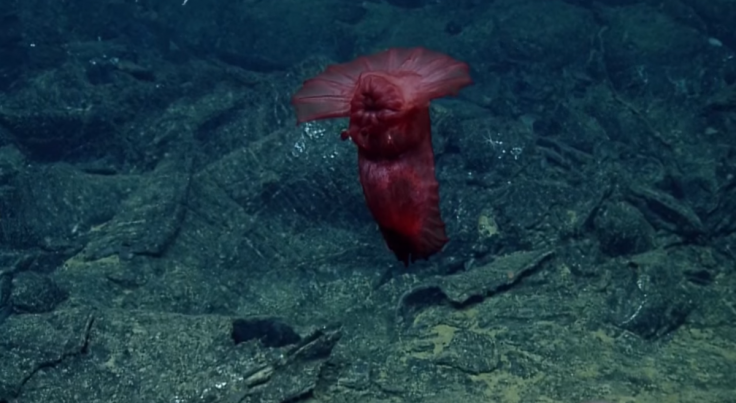Unknown species: Giant jellyfish, pink blobs and a fish with teeth - Top five creatures that scientists do not understand
Every now and then, a species turns up and scientists just have not got a clue what it is, whether it be because they have the same characteristics of several different animals combined, or it maybe because they just look completely bizarre.
These are our top five species that we do not actually know what they are, and where better to start than an animal that washed up just a few days ago...
The Montauk Monster
An odd, wolf-like creature floated into a small town in Connecticut on January 13. Old Lyme did not really know what to expect when this animal carcass – now known as the Montauk Monster – was seen on the beach.
Passer-by Ryan Lee spotted the creature and took several photographs, before sending them to Eyewitness News. People have been speculating whether it is a skunk, a small bear, a fisher cat, or even a badger.
Lee said: "I don't know what kind of animal it is. I contacted Public Works to see if they could come and remove it because obviously you don't want that decaying on the beach."
With its huge teeth, the photographs racked up more than 250,000 views in under 24 hours. The State Department of Energy and Environmental Protection identified the Montauk Monster as a mammal and not a sea creature or a skunk... but that is as far as they got.
Whopper Jellyfish

Almost two years ago, a new species of giant jellyfish washed up on the shore of a Tasmanian beach in Australia. Scientists described the jellyfish as a "whopper" due to its huge size.
"It's so big, but we know nothing about it," said Lisa Gershwin, scientist from the Australian government's Commonwealth Scientific and Industrial Research Organisation. "It highlights again how much we still have to learn about the ocean."
Scientists have said the jellyfish is related to the largest known species of jelly in the world; the lion's mane jellyfish. The huge 1.5 metre species was discovered by 12-year-old Xavier Lim, who said she was "chuffed" at her discovery. She told ABC: "We were at the beach looking for shells and Dad was like 'Whoa! Look at that!' ...I kind of touched it... It was pretty cool."
Pink Blob

On similar lines of jelly-like sea creatures, we come across this thing – which we lovingly called 'Pink Blob'. It was recorded in June 2015 floating around the Galapagos Islands, near some deep sea thermal vents. An exploration vessel, (E/V) Nautilus, spotted the blob, and quickly thought to record it floating through the deep ocean.
Researchers have since tried to suggest what the creature actually is, but they are yet to come to any conclusion. I do not blame them.
Monster-Like Fish
This fish with (what seems like) human teeth was caught in Russia by a fisherman. He thought he had just caught a normal sea bream – he was wrong.
Fisherman Aleks Korobov described his reaction: "I opened its gills which were nice and red but I noticed the mouth wasn't right for a bream and when I opened it I nearly dropped the thing in surprise."
It was left to the Institute of Fisheries and Oceanography to try and understand why the fish had such a big, full set of teeth. Their evidence led them away from believing it was a bream, but possibly a plant-eating Piranha. However, they really do not know how it got there.
"We are convinced it is a member of the Piranha family," said industry expert Gennady Dvorykankin. "...and that it is a herbivore piranha, not one of the meat eating ones you see in films."
Unidentified Life Form

An unknown organism was discovered thousands of feet below an Antarctic lake in 2013. Experts believe it is some kind of bacteria, but that is as far as they got.
The micro-organism was trapped underground for millions of years, under 12,000ft of ice in Lake Vostok. They tried to identify it, but could not find any matches.
"When we tried to identify the DNA, it did not coincide with any known species. Its "degree of similarity was less than 86%," said Sergei Bulat, from the St Petersburg Nuclear Physics Institute. "That is practically zero when working with DNA. A level of 90% tells us the organism is unknown."
The finding was a huge discovery, because scientists say that life existing in such extreme conditions could give us a huge indication as to how some species may be able to survive on other planets. For now though, Bulat said: "We are calling this life form unidentified or unclassified."
© Copyright IBTimes 2025. All rights reserved.





















